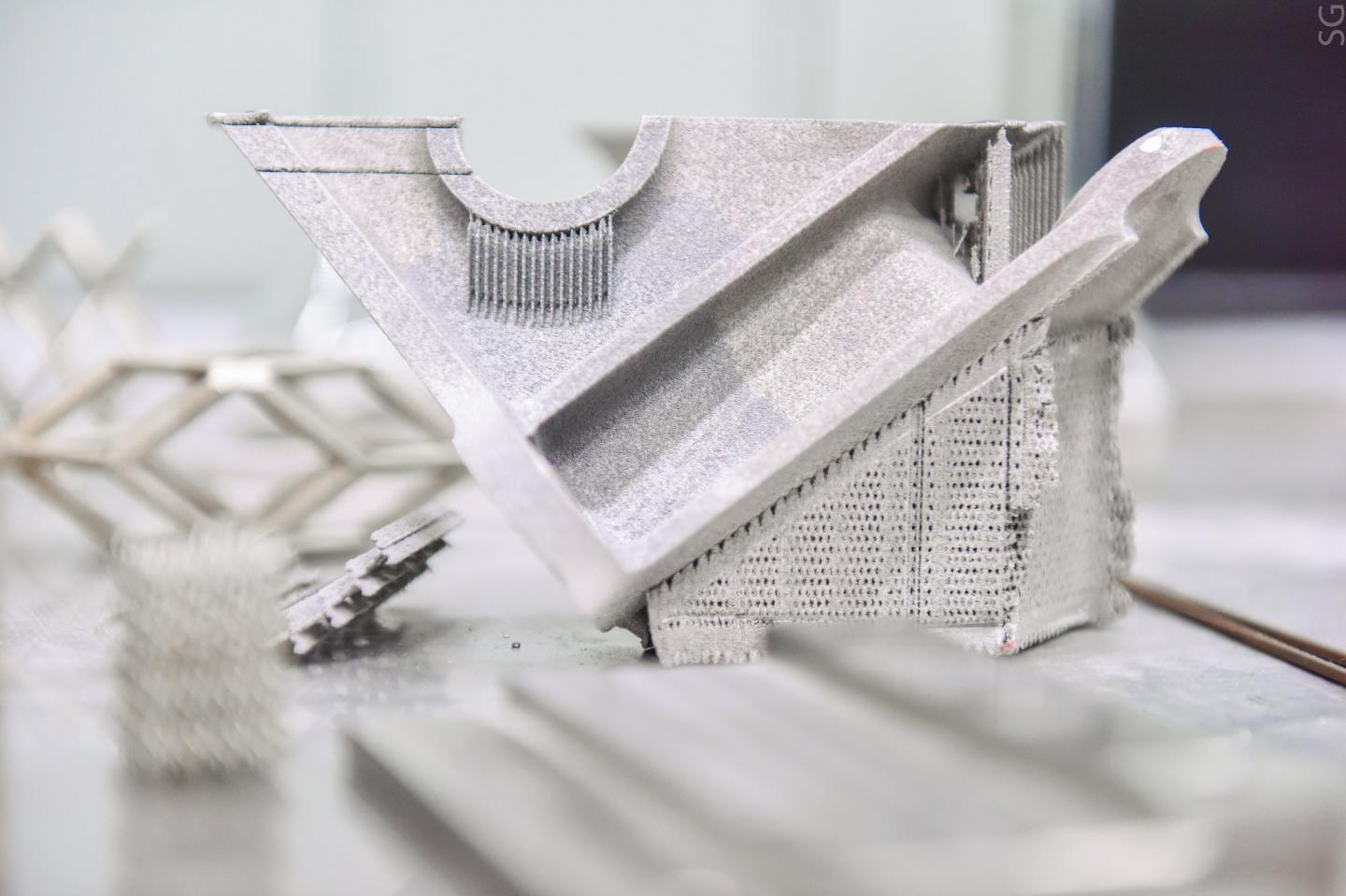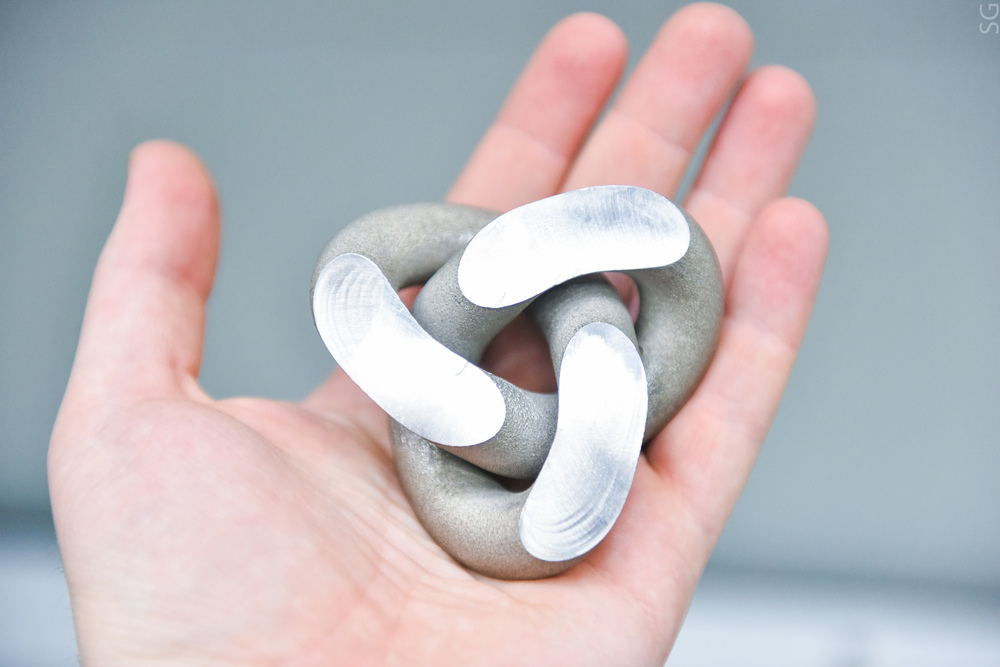Scientists from the Russian National University of Science and Technology (NUST) MISIS have developed a nanocarbon additive for aluminum powder derived from oil waste to improve the 3D printing of aerospace composites.
The scientists were able to increase the hardness of 3D printed aluminum parts by 1.5 times and significantly lower their porosity, paving the way for increased safety of aluminum parts produced for applications within the aviation and space industries.
“Changing the chemical and phase composition of the powder for printing by introducing additional components into the matric allows improving its properties,” said Alexander Gromov, head of the laboratory and professor at NUST MISIS. “In particular, carbon nanofibers have high thermal conductivity, which helps to minimize the temperature gradients between printed layers during product synthesis, at the stage of selective laser melting.
“Thanks to this, the microstructure of the material can be almost completely eliminated from inhomogeneities.”
Adding carbon nanofibers to aluminum powder
Despite 3D printed titanium components being favored in aerospace, medical and automotive industries for their high strength to weight ratio, developments in aluminum 3D printing mean the space and aviation sectors are the main fields of application for the technology.
One challenge facing the use of aluminum powder to produce high-tech parts for these applications is its high porosity, which could lead to defects within printed structures and therefore pose safety concerns. To counter this, scientists from the MISIS Catalis Lab proposed adding carbon nanofibers to the aluminum powder in order to improve the material’s uniformity and density when printed.
Using techniques such as chemical deposition, ultrasonic treatment, and infrared (IR) heat treatment, the scientists synthesized the nanocarbon additives, which were required to be a by-product of associated petroleum gas processing, or waste oil. During the catalytic decomposition of waste oil, carbon accumulates in the form of nanofibers on dispersed metal particles of the catalyst, which the scientists obtained and used for the development of their technology.
Through integrating the carbon nanofibers with the aluminum powder, the scientists were able to increase the hardness of the products printed with the material by 1.5 times, and ensure the material possessed low porosity properties.
Further details of the study can be found in the article titled “In-situ synthesis and characterization of powdery nanocomposite ‘carbon nanotubes/nanoalumina'”, published in the Composite Communications journal. The study was co-authored by E. L. Dzidziguri, A. A. Vasiliev, A. Yu Nalivaiko, D. Yu Ozherelkov, N.S. Zakharova, A.S. Shinkeryov, and A.A. Gromov.

Aluminum 3D printing for aerospace
Although titanium is roughly six times stronger than aluminum, the NUST MISIS researchers are hoping to match its properties with components made from aluminum through further developing optimal conditions for Selective Laser Melting (SLM) of new composite powders. The scientists are also aiming to develop technologies for post-processing and the industrial use of synthesized products.
In 2018, NUST MISIS developed a new metal powder composition called ultrahigh-purity alumina (UHPA) which doubles the strength of aluminum parts. The team has used the material to develop 3D printed prototypes using SLM. Since then, continually developing techniques and applications have gradually increased the material’s viability for aerospace applications.
A year later, NASA’s Marshall Space Flight Center (MSFC) became the first commercial customer of the 7A77 aluminum 3D printing powder, developed by the HRL Laboratories research center, with the aim of exploring the potential of 3D printing to print large-scale components. Shortly after, HRL researchers began working with teams from 3D design and engineering software company nTopology and aerospace manufacturing service provider Morf3D, to explore 7A77’s potential in heat transfer and flow applications. At the time, 77A7 was judged to be the strongest additive manufacturing aluminum to date.
Elsewhere, high-performance materials manufacturer QuesTek Innovations LLC has announced the development of a new aluminum alloy 3D printer feedstock in collaboration with the German Aerospace Center (DLR), while Metal AM specialist Amaero’s high-performance 3D printing aluminum alloy, Amaero HOT Al, has entered the fourth and final stage of international patent approval.
Most recently, German metal 3D printer manufacturer SLM Solutions worked with the aerospace division of multinational manufacturing conglomerate Honeywell to produce a parameter set for 3D printing aluminum F357. Reportedly, the material has the potential to open the door to the wider manufacture of 3D printed aircraft components that meet industry standards.

Subscribe to the 3D Printing Industry newsletter for the latest news in additive manufacturing. You can also stay connected by following us on Twitter and liking us on Facebook.
Be sure to subscribe to the Another Dimension podcast on your chosen podcast player to make sure you never miss an episode.
Looking for a career in additive manufacturing? Visit 3D Printing Jobs for a selection of roles in the industry.
Featured image shows aviation parts printed on a 3D printer from new metal powders. Image via Sergey Gnuskov/NUST MISIS.


